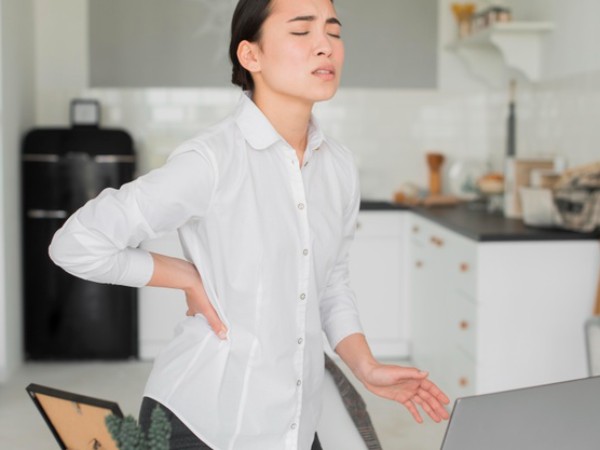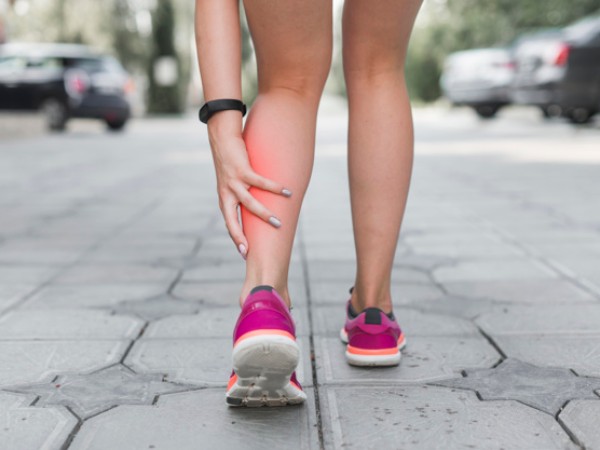
What Is Back Pain?
You can develop back pain from an injury, certain medical conditions and physical activity. Back pain an affect people of any age, but the chance of developing lower back pain increases with age [2].
Back pain can develop in the upper back and lower back. Lower back pain may be linked to the bony lumbar spine, discs between the vertebrae, spinal cord and nerves, lower back muscles and the skin around the lumbar area [3]. And upper back pain may be due to disorders of the aorta, tumours in the chest, and spine inflammation [4].
 A List Of Health Risks Affecting Men
A List Of Health Risks Affecting Men
One of the leading cause of disability worldwide, back pain is something most people ignore. However, it is important that you pay attention because prolonged pain in the back can contribute towards the development of several health problems in the future.
Back pain is categorised into two types, acute pain and chronic or long-term pain. Acute pain starts suddenly and lasts for up to 6 weeks and chronic or long-term pain develops over a longer period, lasts for over 3 months, and causes problems [5].

What Are The Causes Of Back Pain?
Back pain often develops without a cause that your doctor can identify. The most common causes of back pain are strain and poor posture.
- Muscle strain or sprain: Strained muscles and ligaments, a muscle spasm, muscle tension, damaged disks, injuries, fractures, or falls can cause back pain [6]. Lifting something improperly, something that is too heavy and making an abrupt and awkward movement can strain your back, leading to pain.
 Home Remedies To Get Rid Of Muscle Cramps
Home Remedies To Get Rid Of Muscle Cramps
- Bulging or ruptured discs: Each vertebra in the spine is cushioned by discs, that is the discs act as cushions between the bones [7]. Ageing, trauma to the spine, weight gain, smoking, and repetitive stress to the spine from sitting for long hours can cause the discs to deteriorate over time and cause them to protrude outside (bulging disc) [8]. Without treatment, the bulging disc can eventually tear and cause sharp back pain that can move down into the buttocks, groin and down the legs.
- Osteoporosis: This condition can affect any joint in the body, including the small joints of the spine and causes the bones to become porous and brittle, therefore causing compression fractures that can lead to back pain [9].
- Arthritis: Osteoarthritis can cause problems with the joints in the hips and lower back [10]. This type of arthritis develops as a result of wear and tear of the cartilage, which causes a dull, aching, or throbbing pain which becomes worse with movement [11].

…
- Sciatica: It is the compression or pinching of the sciatic nerve, which is caused by injury or trauma to the pelvis, buttocks, or thigh, diabetes and prolonged sitting [12].
- Kidney problems: Kidney stones or kidney infection can cause back pain [13].
- An abnormal curve of the spine: If an individual has an abnormal curve in the spine, such as scoliosis, it can lead to severe back pain [14].
Some of the other causes of back pain are as follows [15]:
- Cauda equina syndrome (a bindle of spinal nerve roots)
- Cancer of the spine
- Ankylosing spondylitis (a chronic inflammatory disease of the spine joints)
- Infections such as pelvic inflammatory disease or bladder infections
- Spondylolysis
- Spinal stenosis
- Sleep disorders
- Shingles
- Twisting
- Coughing or sneezing
- Muscle tension
- Over-stretching
- Bending awkwardly or for long periods
- Pushing, pulling, lifting, or carrying something heavy
- Straining the neck forward
- Sleeping on a mattress that does not support the body
 Yoga Poses To Treat Muscle Pain
Yoga Poses To Treat Muscle Pain

What Are The Symptoms Of Back Pain?
The primary symptom of back pain is an ache or pain anywhere in the back. However, in some cases, it can cause pain in other parts of the body, depending on the nerves affected [16]. Usually, the pain goes unnoticed.
Common signs and symptoms of back pain are as follows:
- Muscle ache
- A shooting or stabbing pain
- Pain that radiates down your leg
- Pain that worsens with lifting, standing or walking

What Are The Risk Factors For Back Pain?
The following factors increase your risk of developing back pain [17]:

When To See A Doctor?
Usually, back pain goes away with proper rest and no treatment. However, if the pain develops along with any of the following, you should consult a doctor immediately [19].
- Weight loss
- Fever
- Inflammation
- Swelling on the back
- Persistent back pain
- Pain down the legs
- A recent injury to the back
- Urinary incontinence
- Faecal incontinence
- Numbness around the genitals, anus and around the buttocks

How Is Back Pain Diagnosed?
The doctor will begin the diagnosis by examining your back and assessing your ability to sit, stand, walk and lift your legs.
If the back pain is caused by any specific reason, the following tests will be ordered to determine where the pain comes from and to rule out more serious causes of back pain [20].
- X-ray
- MRI or CT scans
- Blood tests
- Nerve studies (electromyography)
- Bone scans

What Is The Treatment For Back Pain?
Most acute back pain gets better with a few weeks of home treatment such as using over-the-counter pain relief medication and applying a hot compress or an ice pack to the painful area. One should rest plenty and move around to ease stiffness and to reduce pain [21].
Depending on the type of back pain you have you may be prescribed muscle relaxants, topical pain relievers, narcotics (opioids), antidepressants and injections as treatment. Some people will require surgery for back pain.
Transcutaneous electrical nerve stimulation (TENS) is a popular therapy for patients with chronic back pain.
Physical therapy such as applying heat, ice, ultrasound, and electrical stimulation, yoga are also well-known muscle-release techniques that help [22]. Complementary therapies such as chiropractic, osteopathy, shiatsu and acupuncture can also help ease the pain.

Can You Prevent Back Pain?
You can help yourself avoid back pain by improving your physical condition. The best way to prevent the onset of the condition is by addressing the risk factors. So, consider the following tips to prevent the onset of back pain.
- Regular exercises, especially core-strengthening exercise and flexibility training.
- A diet rich in calcium and vitamin D.
- Having a good posture while standing – stand upright, head facing forward, back straight, and balance your weight evenly on both feet.
- When lifting things, use your legs to do the lifting, rather than your back.
- When sitting, try to keep your knees and hips level and keep your feet flat on the floor or use a support.
- It is important to have proper support for your back while driving.
- Sleep on a mattress that keeps your spine straight and supports the weight of your buttocks and shoulders.
- Avoid smoking.
Source: boldsky blog











